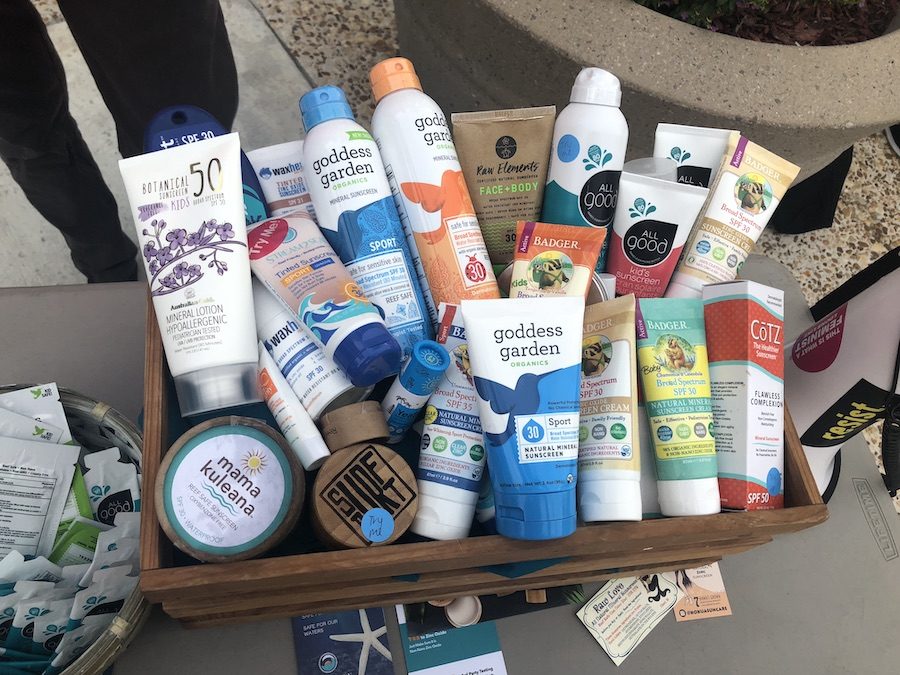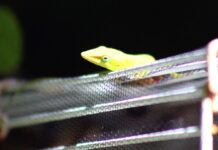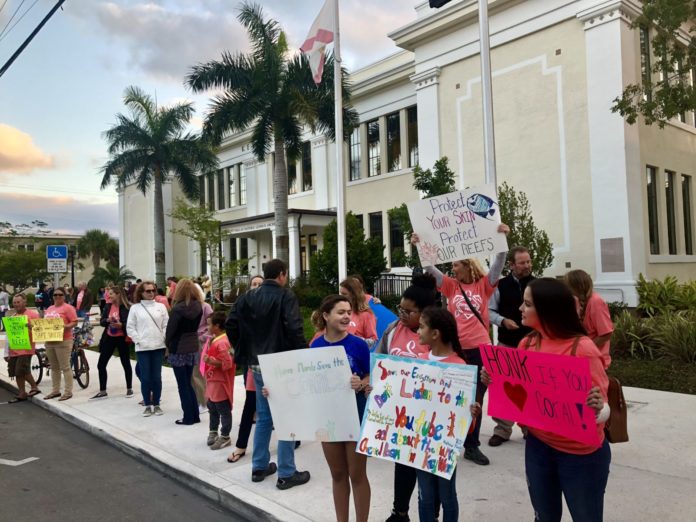On Jan. 15, demonstrators filled the sidewalks outside of Key West City Hall, brandishing signs with message like “Have Morals, Save the Corals.” Reef Relief, a nonprofit organization “dedicated to improving and protecting our coral reef ecosystem,” spearheaded the demonstration, providing coral-colored T-shirts for volunteers and samples of mineral sunscreens.
The debate at hand is regarding a city ordinance prohibiting the sale of sunscreens containing reportedly harmful chemicals oxybenzone and octinoxate. The conversation kicked off with a presentation from Dr. Carys Michelmore, marine biologist and professor at University of Maryland, who expressed concern about “very little research” and the need to assess most damaging stressors to coral.

Mill McCleary, executive director of Reef Relief, voiced adamant support of the ordinance. “In our opinion, the threat to Keys reefs is directly related to water quality,” he said. McCleary also cited a local media survey, which he said found 87 percent of the 3,700 votes were in favor of the ordinance.
There were dozens of presenters, from local teachers reading student letters to “save our reefs” to fishermen and divers in agreement, to dermatologists and cosmetic industry representatives urging commissioners to consider the negative impact the ordinance could have on sunscreen use.
In final discussions, Mayor Teri Johnston said: “We aren’t naïve enough to think that there aren’t financial stakes at play.” The Commission voted 7-0 in favor or the ordinance, but it’s only the first vote. And there are indeed high stakes: the life of our most valuable ecosystem in the Keys, the coral reef, as well as our skin protection and cancer prevention. And for personal care companies like Johnson & Johnson and L’Oreal, there are billions of dollars at stake. So what are the experts on each side saying?
We spoke with Dr. Craig Downs, who holds a doctorate in molecular and cellular pathology from University of Hawaii Manoa and is the executive director at Haereticus Environmental Laboratory. His paper on the toxic effects of oxybenzone in sunscreen was published in the journal Environmental Contamination and Toxicology in 2015, and it has been the backbone of much legislation drafted.
We also spoke with Dr. Kurt Reyerson, who holds a doctorate in plant science from City University of New York, and has a background researching cancer pharmacology in South Florida. Of his role in policy at Johnson & Johnson, he said, “My job is a combination of understanding the regulation and all the science and the conversation surrounding the products.”
Here, we break down the issues into topics covered in conversation with these opposing experts.
How bad are these chemicals for us, and how prevalent are they?
CD: The concentrations in some places like in the Florida Keys, Hawaii, the Bahamas are really high. We first saw it in the Virgin Islands: it was a beautiful iridescent sheen. We sampled the water and found a number of chemicals, and at that time, in the early 2000s, oxybenzone was in everything: moisturizers, shampoo, sunscreen. It was also the highest concentration of any chemical we found. Then we noticed, after 5 to 10 years, that where people are, sunscreen is one of the primary pollutants in the water. We see parts per billion of these chemicals if not more … Oxybenzone is an endocrine disruptor that can feminize fish. It is a toxin, and it can be absorbed in your body. We are seeing it in urine and in breast milk.
KR: In a real-world environment, the levels being tested are parts per trillion. If that’s dispersed, your chances of encountering a molecule of it are low. So squirting it on a cell in a lab doesn’t really tell you anything. … I’ve seen the bad science that says it’s toxic, but I also haven’t heard anyone do published research on whether zinc is “reef safe,” which is a completely made up term.
It begs the question… What else is out there? How strong is the research?
CD: Other researchers have found oxybenzone in fish we eat, shellfish, birds’ eggs, and sea turtle eggs. It’s pervasive and ubiquitous. And what’s more is the eco-toxicology studies, showing how it’s toxic to seagrass, sea urchins, and shrimp. Four other groups have done coral studies similar to mine, and shown how toxic it is to fish. Oxybenzone can be toxic in low concentrations, and it’s toxic in the parts per billion or trillion level. … Oxybenzone is an endocrine disruptor that can cause male fish to become feminized. And that’s not my study; I believe that was a U.S. Fish and Wildlife study.
KR: Craig Downs’ was the only paper I saw, and the [Roberto] Danovaro paper. These are literally the only papers that are dealing with oxybenzone and coral, and you can’t draw those conclusions. Especially from a methodological point of view, there are flaws. … Most of what it’s based on is taking individual cells and growing them in a petri dish, and it’s not a reef. Coral lives in one of the most richly biodiverse communities on a planet. Isolating it is the kind of thing you would do if you already knew there was a problem.
So, what are the alternatives? Why not ban oxybenzone to be “better safe than sorry?”
KR: People talk about alternatives. The FDA allows 16 UV filters. The monograph is pretty old, and industry really only uses six or seven of them, including zinc and titanium dioxide. There’s a lot of science and also art to making sunscreen. So, it’s also like making a cake. I’ve talked to physicists and engineers, and they work to formulate sunscreen so that it sits on your skin a certain way. Oxybenzone is one of our best sunscreen filters, and it’s also photo-stable … You could say that zinc is a broad spectrum filter in that sense, but it’s not as efficient. You can only get up to SPF 50 or 60 with a purely mineral sunscreen. Then you’re getting a 20-25 percent mineral sunscreen, and they are hard to put on. We always say that the best sunscreen is the one that people will use. … Florida has the highest melanoma rates, and Monroe County is literally like twice the rate of the rest of Florida.
CD: We’d like to have the product protection industry gone, and then actually engage with these companies, Johnson & Johnson and L’Oreal, and find new chemicals that will be safe and do the job of UVA protection. The industry is doing the same thing it’s been doing for the last 70 years, and their corporate policies are fossilized back in the 1940s and 1950s. They keep adding new chemicals, and we don’t know what the risk or harm is of these chemicals, and we don’t know what’s going on until 40 or 50 years later, until they’ve made billions of dollars on it. We want them to be profitable, and to make products that are safe for the environment and safe for humans. There should be time for distributors to phase out old products and phase in new. Johnson & Johnson and L’Oreal have known about this since 1992, and they haven’t done anything.





















